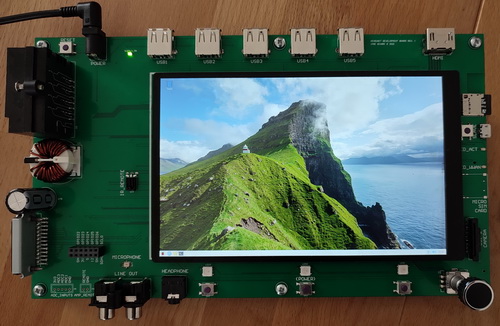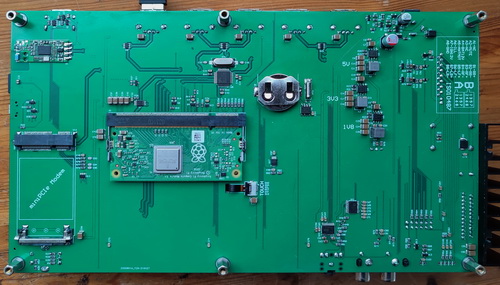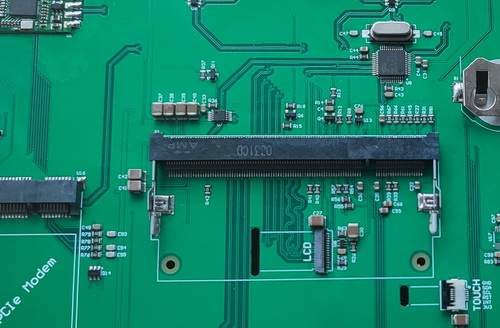AUDIO HEAD UNIT DEVELOPMENT BOARD



Raspberry Compute Module 3 based, full-featured development board focusing on audio-video purposes. There are many Raspberry based development boards on the market. On this one, many interesting features are available next to the commonly implemented ones. High resolution 7" IPS touchscreen, 4-channel audio amplifier with balance, LTE modem for internet connection, WiFi, 5pcs of USB ports, HDMI for external displays, infrared remote sensor and many else.
Using this board, students or well-experienced Linux software development engineers can realize their applications in a much faster way than earlier.
SPECIFICATION:
- 4-layer impedance controlled PCB for high-speed differential pair signals
- full HD 7" IPS display with MIPI DSI interface
- multipoint touchscreen with I2C interface
- Raspberry Compute Module 3 processor
- high definition PCM5102APW stereo audio DAC with PCM interface
- AD5144 digital potentiometer realising a 4-channel balancer
- TDA7851L 4x48W audio amplifier on heatsink
- ISO10487 car audio connector with remote line capability
- monitoring of car ignition and illumination signals
- line level RCA and earphone outputs
- HDMI display connector with CEC feature implemented
- Raspberry Pi High Quality Camera connector
- mini PCI-Express slot for standard LTE modem cards, like Quectel EC25
- SIM card slot for internet services
- high-speed capable microSD card slot for software storage
- FE2.1 7-port USB-HUB controller for USB2.0-HS speed definition
- 5pcs of USB-A sockets with USB2.0 High-Speed compliance
- microUSB socket for Raspberry Compute Module 3 programming
- analogue and digital general purpose input-outputs
- 3pcs of surface mounted push buttons
- 3pcs of WS2812B RGB LEDs
- 38kHz infrared sensor for remote control possibilities
- high quality SPH0645LM4H-B MEMS microphone with I2S interface
- EC111012010H rotary encoder with center push button
- power and reset buttons with self-hold feature controlled by processor
- Realtek RTL8188CUS WiFi module with IEEE 802.11n standard
- PCF8523 real-time clock with CR2032 battery socket
- ADS1015 4-channel analogue-to-digital converter for voltage monitoring
- sub-microamper current consumption while switched off
- 12V DC input connector or supplied via car audio connector from battery
- buck converters creating 5V, 3.3V and 1.8V power rails